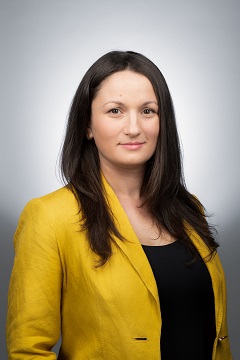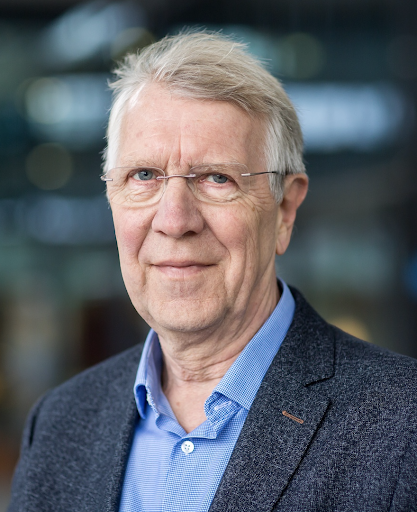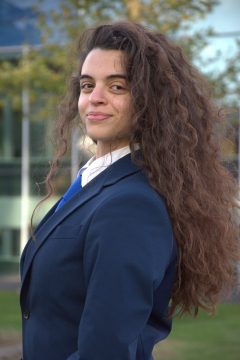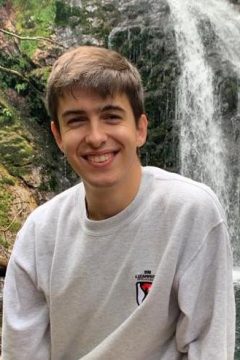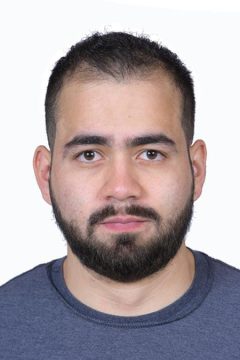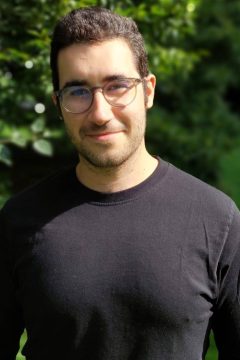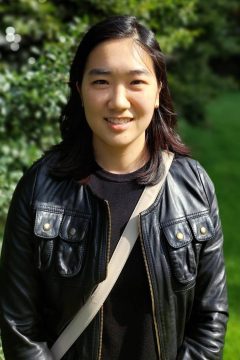CHAIR OF THE DAY
Loredana Protesescu is an assistant professor at the Zernike Institute for Advanced Materials at the University of Groningen. Her research focuses on the chemical design and synthesis of nanomaterials with applications in opto-electronics, extreme environments, magnetism, and biological settings. She explores the relationship between surface chemistry, structure and physical properties to develop these materials, and has extensive knowledge of the development of novel semiconductor nanocrystals.
Recently, she won a NWO grant in collaboration with professor Maria Loi for the development of highly sensitive image sensors for smartphones. She has published over 50 papers, closing in on 20,000 total citations.
GUEST SPEAKER
Prof. Broer is Professor Emeritus at Eindhoven University of Technology, fellow at the Institute for Complex Molecular Systems and distinguished professor at South China Normal University. His research field is polymer science with an emphasis on responsive polymers, self-organizing systems, liquid crystals, and their applications in the field of optics and soft mechanics. Prof. Broer started his professional career in 1973 at Philips Research Laboratories in Eindhoven where he became Vice President Research in 2003 and specialized in data storage, communication, and display systems. In 1985 he introduced the process of in-situ photopolymerization of liquid crystal monomers, presently being used by many academic and industrial groups, for instance for optical and soft robotic components. In 2010, he became professor in Eindhoven to chair the Department Functional Organic Materials and Devices. Prof. Broer is member of the Royal Dutch Academy of Arts and Sciences. He has around 350 publications in peer-reviewed journals and more than 120 US patents.
STUDENT SPEAKERS
Ahmad Dibajeh

Topological spin textures in magnetic multi-layers imaged via SPLEEM
Supervisor: Dr. Roberto Lo Conte
Research group: Topological Quantum Materials
The study of magnetic domains in computational device architectures allows for advancements in scalability and energy efficiency. This is especially possible in new architectures, which exploit topologically protected quasi-particles, magnetic skyrmions. Special skyrmions which exist in equilibrium under ambient conditions have been demonstrated through interlayer exchange coupling.
Surface characterisation data is processed in this project; where In-Situ Spin Polarized Low Energy Electron Microscopy (SPLEEM) of Layer by Layer growth of alternating Ni and Co monolayers on Cu/Nb(110) was performed. Each layer’s surface is characterized with respect to SPLEEM images pointing in-plane and out of plane. Out of plane skyrmions on Ni’s surface are found to exist. Moreover, quantitative analysis of the skyrmion size and frequency is presented.
Alwin Jansen
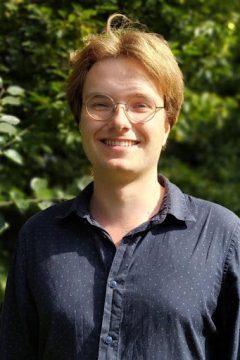
Simulating the biomolecular corona
Supervisor: Dr. Christoffer Åberg
Research group: Pharmaceutical Analysis
The protein corona is an adsorbed protein layer that forms when a nanoparticle is exposed to a biological fluid. The protein corona plays a determining role in the interaction of the nanoparticle with the surrounding biological environment, providing its biological identity. Accurate modeling so far has been difficult due to its complex dynamics, depending on a variety of factors such as protein composition and environmental conditions.
This research project aims to provide a start in modeling the formation of the protein corona on bear nanoparticles using diffusion-based simulations. Using the simulated coronas, the colocalisation of proteins was investigated to determine the possibility of short-range protein-protein interactions on the nanoparticle surface.
Ayush Gupta

New NMR methods for probing Photo-responsive materials
Supervisor: Prof. Dr. Patrick C.A. van der Wel
Research group: Solid State NMR
Photo-responsive materials hold substantial promise for new applications in a range of areas, including functional nanogels and nanoparticles for biomedical and theranostic purposes. For such applications, light-responsive elements are combined with self-assembling (macro)molecules to attain nano-materials with controllable light-activated properties. Previous studies suggest that these materials could be utilised in drug-delivery systems to achieve improved control over the cargo release and distribution. Yet, there are many challenges in directly probing and measuring the rich atomic-level interactions of such light-activated transformations. In this light, solid-state NMR spectroscopy is an advanced spectroscopy technique based on nuclear spin interactions that is used to determine atomic-level structure in self-assembled nanomaterials. We demonstrate our development of novel methods and instrumentation to enable the use of magic-angle-spinning NMR to probe lipid self-assembling vesicles. We use the solid-state NMR technique to reveal atomic-level changes in structure and dynamics of lipid nanoparticles. Thus, helping to develop new techniques in order to demonstrate and implement novel measurements under light-irradiation, in situ and ex situ.
Clifford Biame
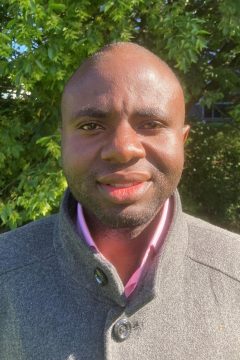
Excitation Energies of Erbium ion (Er3+) in a Crystal Environment
Supervisor: Prof. Dr. Remco W. A. Havenith
Research Group: Computational Chemistry
This work uses upconversion to explore the erbium (Er3+) ion’s excitation energy in a crystal environment. Upconversion is a nonlinear optical phenomenon in which a higher-energy photon is emitted due to the successive absorption of two or more low-energy photons. Using spectroscopic techniques, the energy levels and transitions are accountable for the upconversion process. The optical absorption spectrum with a series of peaks helps to display the amount of excitation energies obtained when the electron is excited. The strength of each peak is given by the transition dipole moment. Different upconversion paths are identified by our data, most notably the one that involves the change from the ground state 4I15/2 to higher excited states such as 4S3/2 and 4F9/2. These transitions are facilitated through intermediate energy levels like 4I11/2 and 4I13/2. The interaction between the Er3+ ions and the surrounding crystal lattice produces the crystal field effect, which is essential for altering the electronic structure and, in turn, the ions’ excitation energy. The results open the door for the construction of improved photonic devices, where exact control over emission wavelengths and upconversion efficiency is crucial, such as lasers, LEDs, and optical amplifiers. For a future perspective, the excitation energies should be calculated when the Er3+ ion is at the surface of the crystal.
Darius Pacurar
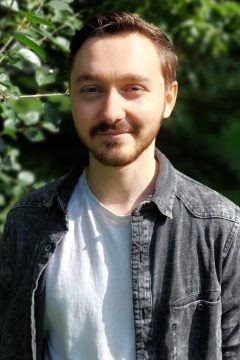
Low temperature magnetic imaging and spectroscopic investigation of van der Waals magnet CrSBr via SPLEEM
Supervisor: Dr. Roberto Lo Conte
Research group: Topological Quantum Materials
Since their first discovery, the scientific interest in van der Waals (vdW) magnetic materials has been growing constantly. Such interest is justified by the layered nature of vdW materials. First, this allows for a magnetic order to emerge in truly two-dimensional systems just one-layer thick. Second, such layered nature makes them ideal for the formation of heterostructures with other magnetic/non-magnetic vdW materials, where novel magnetic and electronic properties can emerge given the strong interaction between the layers via clean/well-defined interfaces. In particular, a vdW magnetic material which is attracting much attention lately is CrSBr. CrSBr has been predicted and experimentally observed to be a layered antiferromagnet, where ferromagnetic mono-layers are coupled antiferromagnetically to the neighboring layers, making this material very promising for applications in 2D spintronics.
Kamila Handke
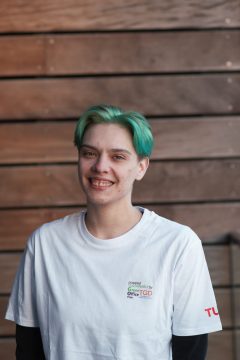
Mechanical deformation of stimuli-responsive liquid crystal elastomer thin films
Supervisor: Dr. Michael Lerch
Research group: Active Molecular Systems
Soft robotics is a field that has evolved significantly in recent years, with the potential to revolutionize application in healthcare, sensors, electronics and wearable devices, relying on the flexibility and adaptability of smart materials. One of the driving forces in development of soft robotics are stimuli-responsive materials, which sense changes in their environment and adapt accordingly. Such materials are often used as building blocks for biomimetic and functional systems. Liquid Crystal Elastomers (LCEs) are lightly crosslinked liquid crystal networks, which exhibit anisotropic mechanical deformation upon stimuli application, owing to the alignment of the liquid crystal chains. Despite the recent progress, challenges still remain in designing and controlling the elastodynamic properties in the context of specific applications.
The scope of this project involves investigating two different thin film LCE systems with differing response mechanisms. One system incorporates an azobenzene photoswitch moiety into the network, while the other relies on a photoactive dye to induce a thermal response. The optimization of the fabrication process included comparison of planar and splay structures, achieved through different alignment layers. Additionally, the project examined the impact of thickness and azobenzene content on the extent and rate of the mechanical response of the films. Lastly, in collaboration with RUG’s Data Science team, efforts were made to develop and automate a protocol for efficient video analysis of thin film actuation due to applied stimuli.
Leandro Mosquera Meztra

Niobium oxide prepared through a novel supercritical-CO2-assisted method as a highly active heterogeneous catalyst for the synthesis of azoxybenzene from aniline
Supervisor: Prof. Paolo Pescarmona
Research group: Product Technology
High-surface area Nb2O5 nanoparticles were synthesized using a novel supercritical CO2-assisted method and applied as a heterogeneous catalyst for the oxidative coupling of aniline to azoxybenzene, utilizing environmentally friendly H2O2 as the oxidant. The application of supercritical CO2 (scCO2) in the synthesis of the Nb2O5-scCO2 catalyst resulted in a significantly enhanced catalytic activity compared to a reference catalyst prepared without scCO2. Furthermore, the catalytic properties of Nb2O5-scCO2 were evaluated in the oxidation reaction of ethylbenzene.
Maria Perraki
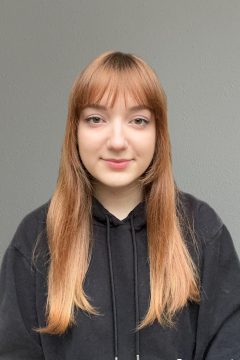
Motility of oil droplets in chiral lipid systems
Supervisor: Prof. Nathalie Katsonis
Research Group: Active Molecular Systems
Movement is a hallmark of life, crucial from origin-of-life research to contemporary applications like drug delivery and reaction acceleration. However, the mechanisms by which controlled molecular movement can translate across length scales into purposeful motion have not yet been completely unravelled. Meanwhile, the study of droplet behaviour has become relevant in modern biology, due to the phase separation of contents that occurs within cells. It has been shown that a local inhomogeneity in interfacial tension is enough to generate movement of microscopic compartments like droplets, and that this so-called “Marangoni effect” is driven by the solubilization of the droplet by lipid molecules. The focus of this project was to study the interplay between chirality and the motility of oil droplets in lipid-rich water. At first, chiral lipids were synthesised and characterised in terms of their aggregation properties by Dynamic Light Scattering (DLS) and interfacial tension measurements. Subsequently, a series of oils were introduced in aqueous solutions of those lipids and the formed droplets were monitored using optical microscopy and a tracking software. This study provided insights into whether the chirality of lipids, active droplets, or their combination, can modify the trajectory, speed, or other characteristics of droplet motility, advancing our understanding of the parameters that affect conscious microscopic motion.
Towards the deposition of corroles on noble metal surfaces by organic molecular beam epitaxy
Supervisor: Prof. Petra Rudolf and Prof. Wilhelm Auwärter
Research group: Surfaces and Thin Films
Tetrapyrroles such as porphyrins and corroles are functional molecules with interesting properties. Whereas porphyrins are well-explored on surfaces, much less is known about corroles. Corroles present a different symmetry macrocycle compared to porphyrins (see figure) and thus provide a different environment for the central metal atom, that dictates for example magnetic and catalytic properties of the molecule. Due to the modified shape of corroles, different self-assembled structures are expected in comparison to porphyrins. Additionally, employing temperature-induced coupling reactions, novel fused tetrapyrrole systems can be achieved on coinage metal supports.
This project aims to prepare and study supramolecular assemblies of the selected tetrapyrroles on coinage metal supports, such as Ag(111). The deposition of three different corrole compositions was studied and characterized using scanning tunneling microscopy, x-ray photoelectron spectroscopy, and mass spectroscopy. However, the sublimation of the intact corrole proved challenging. The measurements suggest that the molecules decomposed before they could reach the substrate.
Chiral morphogenesis: from elastic droplets to helical filaments
Supervisor: Prof. Nathalie Katsonis
Research group: Active Molecular Systems
The shape of cells is a key element of their function, such as the filaments growing in neurons that support intercellular communication. Many cells also have the potential to change their shape, for example during cellular division. Many of the fundamental physical and chemical mechanisms that drive cellular shape changes are still unknown, but they can be studied using fully synthetic model systems. Recently, it has been seen that in highly concentrated aqueous solutions of lipids, fluid droplets undergo morphogenesis as a result of inhomogeneity in the interfacial tension.
Adding a chiral dopant to a nematic liquid crystal mixture during the synthesis of droplets induces a twist in the ordering of the liquid crystal molecules when the temperature is decreased, and the molecules arrange in a helical manner. In this project, a chiral molecule was synthetized and characterized that should induce the formation of a left-handed helix in a liquid crystal. Its properties were also compared to its chiral counterpart by studying how the droplets containing these chiral dopants respond to the drop of the interfacial tension by the change in temperature.
Keyword spotting with ferroelectric-based integrate-and-fire neurons
Supervisor: Dr. Erika Covi
Research group: Bio-inspired systems and circuits
The ability to detect correlated events in the environment is an important feat of biological neural networks. Neuromorphic computing strives to mimic this ability for efficient sensory processing. This work explores the simulation of a HfO2-based ferroelectric capacitor (FeCap)-complementary metal oxide semiconductor (CMOS) leaky integrate-and-fire (LIF) neuron able to detect highly correlated events exploiting two different temporal dynamics, integrated within a recurrent neural network (RNN). The possibility to exploit two time constants increases the versatility of the neuron and its dynamic adaptation while offering a compact and elegant solution for detection of both transient and sustained coincidences. Moreover, the time constants are in biologically relevant time scales, which makes the neuron suitable to solve real-time tasks such as speech detection, including keyword spotting.
Applying tissue clearing for fluorescence-based intraoperative tumour margin evaluation
Supervisor: Dr. Pieter van der Zaag
Research group: Molecular biophysics: bionanotechnology, OMIG
Cancer is one of the most common causes of death globally. Since surgical removal of tumours constitutes a major part of cancer treatment, it is important to ensure that all cancer tissue is removed completely to prevent the need for further surgery or (chemo)radiotherapy. In intraoperative pathology-assisted surgery, fluorescence imaging can be used to detect tumour edges in excised tissue. If necessary, surgeons can remove additional tissue during the surgery.
A tumour lights up by administering a fluorescent near-infrared tracer which accumulates in tumour tissue. However, the opaqueness of the excised tissue limits the imaging depth. To allow for margin evaluation from all directions, tissue clearing can be applied, enhancing the imaging depth by decreasing light scattering within the tissue. In this project, clinical samples were cleared with a new fast-clearing technique (< 1h) and imaged with confocal microscopy. The tracer distribution in healthy and tumour tissue was analysed as a step towards the development of intraoperative 3D tumour margin assessment.
Symmetry protected spin persistent texture in bulk non-magnetic materials
Supervisor: Jagoda Slawinska
Research group: Theory of Condensed Matter
The field of spintronics seeks advancing past conventional electronics, based on electrical charge as the sole information carrier, by using the electron spin as an additional degree of freedom. In this field, materials with large spin orbit coupling (SOC) are very desirable, as this effect is at the center of many processes that lead to spin-charge conversion, essential to spintronics. Nevertheless, large SOC is also associated with shorter spin lifetimes. SOC results in a momenta dependent effective magnetic field that acts on the spin. As such, as an electron gets scattered, changing its momenta, also its spin will be affected, losing its coherence. As a solution: materials that present a spin texture fully polarized in one direction in momentum space. This will lead to carriers propagating in the real space in a persistent spin helix state, which is predicted to greatly enhance spin lifetime. For some bulk space groups, this persistent spin texture (PST) arises in certain regions of the Brillouin zone, imposed by the symmetry of the material. We propose non-magnetic materials that are predicted to present this symmetry-protected PST near the Fermi level and perform DFT calculations.
Energy Transfer Between Two Dimensional Sheets
Supervisor: Prof. Thomas La Cour Jansen
Research group: Theory of Condensed Matter
Chlorosomes are the light-harvesting antennae that allow photosynthetic Green Sulfur Bacteria to survive under extremely low-light conditions. Owing to the evolutionary adaptation of the photosynthetic architecture, the energy transfer found between sheets rolled up within these chlorosomes are known to be most efficient among all natural light-harvesting systems. To understand the role of the relative orientation of the stacked sheets for the transfer process between the sheets, the energy transfer between Chlorosome type sheets depending on the angular relation has been modeled. This will provide insight into the role of stacking for the bacteria and if it can be used to create artificial systems with desirable properties either suppressing or enhancing energy transfer.

